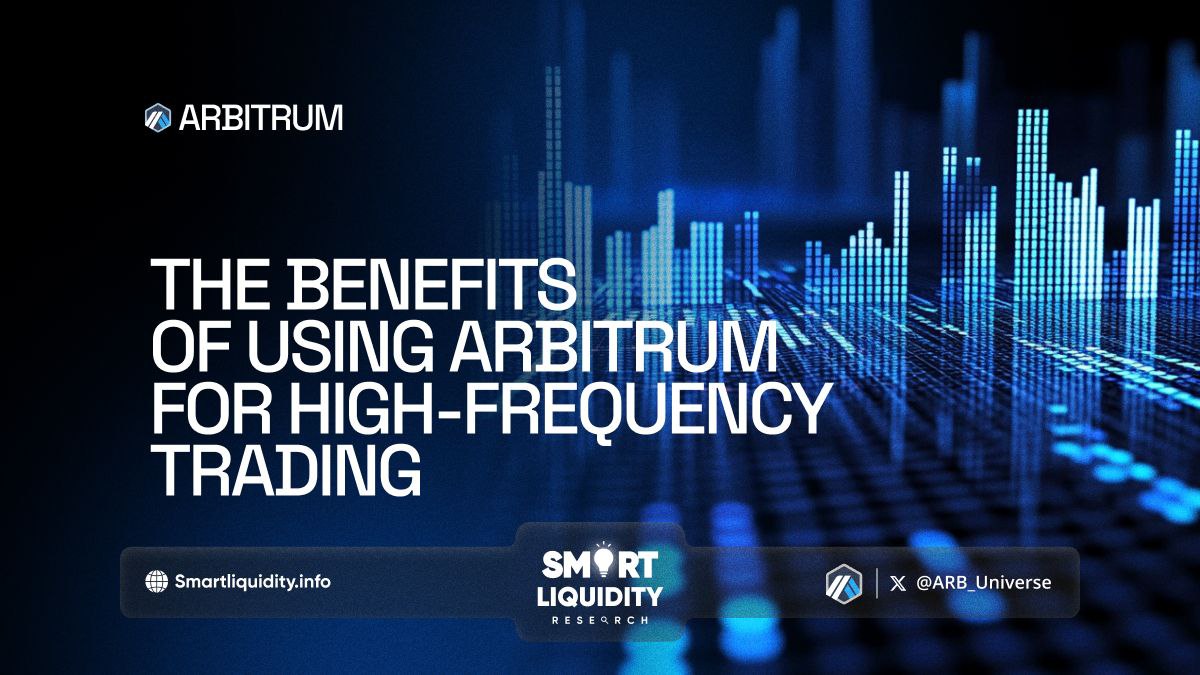The Benefits of Using Arbitrum for High-Frequency Trading


The Benefits of Using Arbitrum for High-Frequency Trading! As decentralized finance (DeFi) continues to evolve, traders are constantly seeking platforms that can offer speed, scalability, and cost efficiency. High-frequency trading (HFT) is a particular strategy that requires near-instant transaction processing, low latency, and cost-effectiveness to be profitable.
In this context, Arbitrum has emerged as a leading Layer 2 scaling solution that meets these demands, making it a top choice for high-frequency trading in the crypto space.
1. Low Latency transactions
High-frequency traders rely on the ability to execute trades in milliseconds. Arbitrum, as a Layer 2 solution built on Ethereum, significantly reduces transaction confirmation times. By moving the bulk of transaction processing off-chain, Arbitrum minimizes the delays associated with Ethereum’s Layer 1 network, where congestion and high gas fees often hinder efficient trading. This allows traders to process more trades in less time, optimizing their strategies.
2. Cost Efficiency
One of the largest barriers to high-frequency trading on Ethereum Layer 1 is the high gas fees that accumulate with frequent trades. These fees can eat into profits and make strategies unviable. Arbitrum offers a solution by drastically lowering transaction costs, enabling traders to execute hundreds or thousands of trades without worrying about prohibitive fees. This cost efficiency is essential for profitability in HFT, where margins are often razor-thin.
3. Scalability and Throughput
High-frequency trading requires platforms that can handle a large number of transactions per second (TPS) without slowing down. Arbitrum’s architecture is designed to support high scalability, allowing it to process many more transactions than Ethereum’s mainnet can handle. This scalability ensures that the network remains efficient, even during peak trading periods when transaction volume spikes.
4. Enhanced Security
Despite operating as a Layer 2 solution, Arbitrum inherits the security guarantees of Ethereum. For high-frequency traders, ensuring that trades are executed in a secure environment is paramount. By leveraging Ethereum’s decentralized and battle-tested infrastructure, Arbitrum offers both speed and security, making it an ideal platform for traders who need both reliability and performance.
5. Fostering DeFi Growth
By providing a more efficient trading environment, Arbitrum plays a critical role in fostering the growth of decentralized finance. As more traders adopt Arbitrum for HFT, liquidity on decentralized exchanges (DEXs) increases, which in turn benefits the broader DeFi ecosystem. This increased activity leads to tighter spreads, higher liquidity, and greater market efficiency, all of which are positive for the ecosystem as a whole.
In Summary
High-frequency trading has long been a staple of traditional finance, but its adoption in the cryptocurrency world has been slowed by the limitations of existing networks. Arbitrum’s innovative Layer 2 solution addresses these limitations by offering low latency, cost efficiency, scalability, and security. For traders looking to gain an edge in the competitive world of high-frequency trading, Arbitrum offers a robust and reliable platform to build upon.
Arbitrum’s advantages are shaping the future of high-frequency trading (HFT) in DeFi towards Layer 2 solutions. Its speed, cost efficiency, and scalability position Arbitrum as a key player in HFT within decentralized finance.




